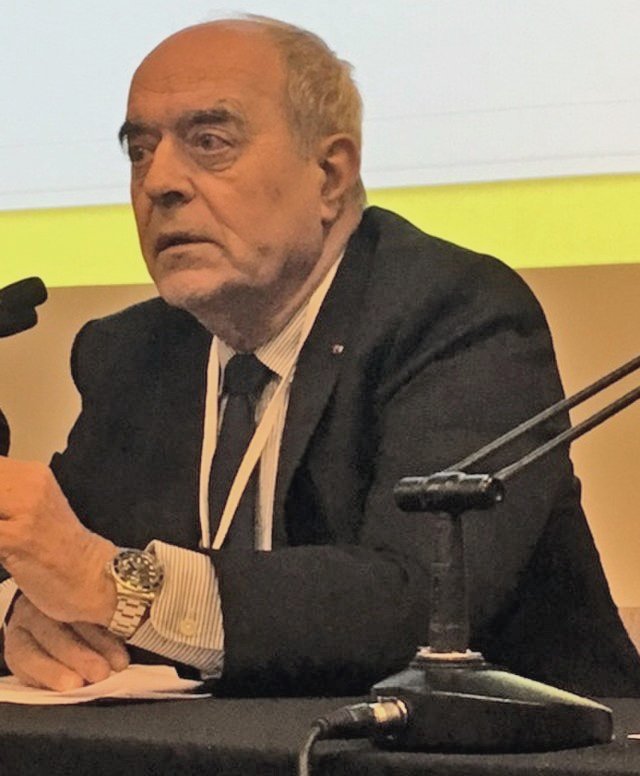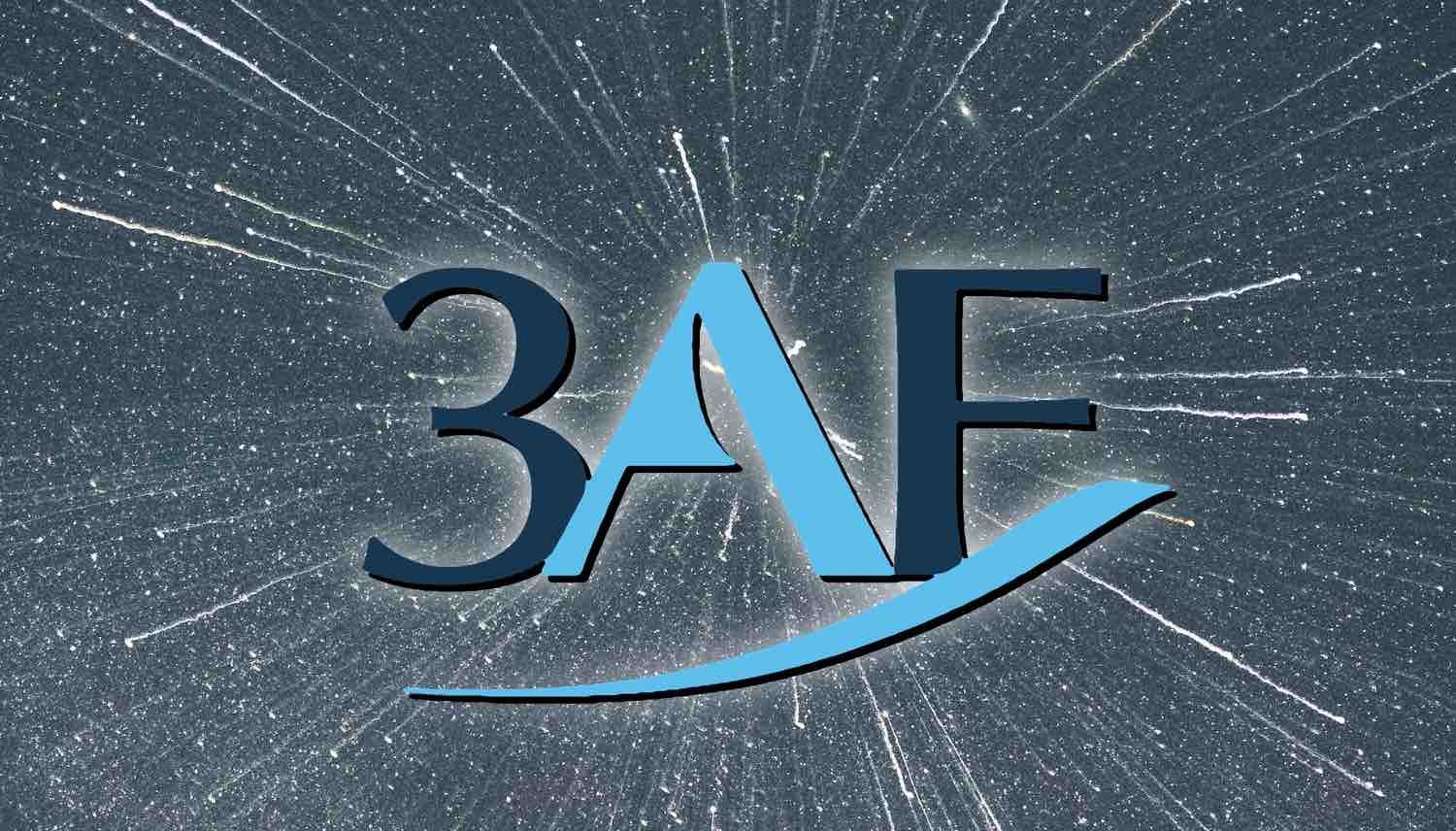A recent conference in Paris, France, brought together leading scientists to delve into the study of unidentified aerial phenomena (UAP), exploring optical observables and striving for a unified approach to identify and understand these mysterious aerial objects.
On June 16th, the French Aeronautical and Astronautical Association’s UAP technical committee, “Sigma 2,” held its first international conference on Unidentified Aerial Phenomena. Designed to give an overview of the ongoing scientific research regarding Unidentified Aerial Phenomena, the day-long event centered around optical observables, the different ways and methods to record UAP and specific optical signatures that can be used to help identify them.
Sigma 2’s Chairman Luc Dini began by reminding the audience that, despite recent debates, UAP were indeed real phenomena that can be recorded, specifically with cameras from ultraviolet to infrared spectrum. He then listed the various ongoing scientific efforts regarding UAP and explained the goal of the conference: to find the common denominator between optical signatures of UAP to better identify them.
The conference started with an opening speech by guest speaker Alain Juillet, senior executive advisor in security and intelligence and formerly in charge of economic intelligence to the Prime Minister. He recalled that for a very long time, UAP scientific research was limited to witness testimonies, although that has changed. Because of increasing military needs and intelligence operations, new data collection platforms have been created, making UAP impossible to avoid.


“Up to now, UAP have never been aggressive, but the fact that UAP can get in or out near space or sea represents a real danger,” Juillet stated. “Today, we are unable to control it and to avoid it. It’s a national security problem for all major countries, which needs to be controlled and monitored by our air force and Navy.”
He added that solving that problem required promoting scientific research on UAP using state funds, as the U.S., China, and Russia have already done. He then congratulated Sigma 2 for organizing the event, which he views as the best way to “open the eyes of both the public and governments on this new emergency.”
In a follow-up interview with Alain Juillet, The Debrief was able to talk in-depth about the geopolitical implications regarding UAP. When asked if sharing UAP information was in the best interest of national Defense now that the Five Eyes have become involved.
“We’ve recently seen that, on the strategic and military fronts, there’s been increasing collaboration between those 5 countries,” Juillet said. “So it isn’t very surprising that they’ve decided to all work together to be more efficient on the subject of UAP because it’s a problem that’s obviously starting to preoccupy everyone.”
“I don’t think the Americans have come up with a satisfactory answer on their own yet, so they’re starting to think that maybe, with the other four, there are opportunities to improve our perception.”
“What’s more,” he added, “since they’re the undisputed leader of the gang of five, they’re the ones who’ll reap the main benefits anyway.”
The second element is that, obviously, in terms of the defense industry, an understanding of the techniques and materials used for UAP would advance the ability to build machines that are different from what we do today, and better [and] more efficient, at least in terms of speed, maneuverability and so on. The Americans aren’t going to trade with the Russians or the Chinese, or with us for that matter.”
Asked by The Debrief if France should try to share information about UAP with its own network of allies and partners, Juillet added, “I think it is in France’s interest to discuss these issues with as many partners and countries as possible.”
“Look at Brazil, which has seen a number of things. It’s in our interest to develop exchanges with the BRICS [Brazil, Russia, India, China, and South Africa] because the BRICS are certainly interested in information because it’s on everyone’s mind.”
“When you’re a big country, it’s obvious that the UAP problem is considered very important because it’s about defense. UAP has never been aggressive up to now, but they’re still things we can’t control, so they can get into our space, airspace, or whatever, without us being able to stop them, and that poses huge problems.”
“I certainly hope that the major Defense departments of the world are trying to understand what it’s all about,” Juillet said when asked about the current state of intelligence and defense research on UAP in France. “But I haven’t sensed – at least in France – a mobilization of the kind that exists in the United States, or in China, where people are obviously starting to ask real questions.”
The first speaker to present his research was Dr. Beatriz Villaroel, an astronomer and Nordic fellow at the Nordic Institute for Theoretical Physics, as well as the Director of the Vanishing and Appearing Stuff during a Century of Observations (VASCO) project, which looks for vanishing stars that could indicate a strong signature of extraterrestrial intelligence or unknown phenomena using all-sky surveys.


Her presentation began with the introduction of the Exo Probe project, a resource designed to search for UAP in real-time up to 50 million kilometers away from Earth (a third of the Earth-to-Sun distance). A global network of high-speed cameras would allow scientists to detect, localize and perform a spectral analysis of UAP, which consists of recording the various optical signatures given by the specific types of light reflected and emitted by an object to surmise information about it.
Dr. Villaroel explained how the failure of the search for extraterrestrial intelligence (SETI) using radio signals gave birth to other types of SETI efforts, which include the search for laser signals, although adding that none of these efforts have succeeded so far. She then introduced the VASCO project and the effort to verify if transient luminous phenomena in Earth’s orbit could be explained by small objects emitting or reflecting light. These lights would then be captured by a telescope.
In their study, among thousands of transient lights recorded, not a single one originated from a star. Furthermore, none could be explained by instruments, astronomical phenomena, operator error, or other factors. To reduce the number of false positives, VASCO used photographic plates from the 1950s, before artificial satellites were invented.
Their research was successful, as they did find such transients. However, then Villaroel and the team tried to publish their study in the Monthly Notices of the Royal Astronomical Society (MNRAS).
“The paper is no longer in review in MNRAS. MNRAS has rejected it. The referee process was going kind of well until the referee discovered it was a SETI paper, Villaroel said,” a statement epitomizing the state of the social acceptance of scientific research regarding extraterrestrial life among scientific institutions.
Nonetheless, now that their proof of concept has been validated, she explained that their next 5-year- plan is to use a network of wide-field telescopes to locate unknown objects in real time.
In a follow-up question, The Debrief asked Dr. Villaroel if written astronomical records predating photographs could be used for scientific research. She answered that it could be possible to use them “as guiding material in order to establish some ideas on what to look for in modern datasets.”
Next was Massimo Teodorani, an astrophysicist collaborating with the long-term UAP study of the Hessdalen Valley and contributing member of the Society for UAP Studies. His presentation concerned the reactivation and ongoing upgrade of this Norwegian study started in 1984. He is currently performing it at the invitation of Dr. Erling Strand.
He explained that the current upgrade would reactivate old instruments, including radar, magnetometer, VLF/ELF antenna receiver, weather station, and random events generator. They will add an entirely new all-sky camera and a pan-tilt camera, automatically tracking anomalies alongside FLIR cameras. They will also add a spectrum analyzer, microphones, and drones located on-site to investigate anomalies. Artificial intelligence will be charged with activating the instruments.
He then described how a high-speed camera will be used to record fast-moving targets. Using a wide field spectrum analyzer, they hope to detect modification of the light emitted by the anomaly to extrapolate information on the object, like in the Zeeman effect. Cameras will be positioned 1 km from one another to allow triangulation, which determines the distance to the anomaly. He concluded his presentation by explaining how each instrument allowed the entire system to build layers of data that could be correlated afterward, allowing identification of the various phenomena known to occur above the Hessdalen Valley.
Asked by The Debrief if he planned to determine whether high-speed cameras could improve the recording of fast-moving UAP, he answered that he indeed plans to do it, as he believed such speeds “are real” by using high-speed cameras in wide-angle mode. Aiming to record 1,000 to 5,000 frames per second, he hoped to record objects jumping from one point to another in the sky in between frames. Added to other instruments looking into the distance to the anomaly, the speed of the anomaly can then be calculated. He added that if a speed reached 10 (Mach 30) to 60 km/s (Mach 180), a Doppler effect can be detected by the spectrum analyzer, confirming the speed calculations on specific vectors.
The Scientific Coalition for UAP Studies’ Peter Reali followed. He presented an analysis of the so-called “Rubber Duck” video, filmed by the Department of Homeland Security in November 2019. The video is 30 minutes long and was filmed from a plane after the object was seen crossing the Mexican border.
Among the key points addressed in his presentation, Reali said:
-
- The object shows no visible means of propulsion nor heat signature related to what an engine could produce;
- It is structured;
- It shows specific movements;
- It appears to be colder than the surrounding environment;
- It seems to be made of 2 different parts that could be linked by a very thin tether that appears almost invisible at times
- It emits no light but moves against the wind.
Relying on the expertise of David Falch as depot level FLIR technician, he and Reali managed to extract information from the FLIR display, allowing them to calculate the distance to the object and its speed. Once they calculated its altitude, they could estimate the wind speed. Due to the reflectivity of the light, they managed to deduce that the object was metallic. With all these clues, they removed mylar balloons, airplanes, and drones as possible causes.
Additionally, the object reportedly had a velocity greater than the wind speed calculated at all possible altitudes, suggesting that it was indeed able to self-propel itself in the atmosphere. Finally, using the Beta angle of the camera, they estimated the size of the object to be less than 9ft (2.7m), and Peter Realli concluded by categorizing the object as anomalous in nature, the only conventional explanation left being an unknown natural phenomenon.
When he was asked by The Debrief if the “Rubber Duck” could be a proper subject for the brand new SCU intention study project, he answered that, in his opinion, human evaluations of UAP intentions are inherently anthropocentric and that we may not be able to understand them. He personally thinks the potential intelligence behind UAP seems almost completely disinterested in human affairs and may be engaged in operations with motives we have yet to clearly discern.
The next speaker was astronomer and data scientist Dr. Jacques Vallée. His presentation was about the estimation of optical power output by UAP. He listed a series of cases. One of them was a report by Canadian pilots from August 27, 1966, above Alberta. An hour before sunset, they approached a large thunderhead when the pilot in 2nd position noticed a sharply defined, disk-shaped light below the plane and above the clouds, brighter than sunlight.
A photograph taken by the pilot was analyzed by Dr. Bruce Maccabee, who estimated that the power output necessary to achieve that amount of light was equivalent to 2500 megawatts, which is equivalent to a typical nuclear power plant. Dr. Vallée then described other cases from around the world and concluded on the necessity of conducting scientific research on the subject at an international scale.
During follow-up questions, The Debrief asked Dr. Jacques Vallée if such an amount of optical power output could be caused by communication systems, propulsion apparatus, or exhaust of excess energy. Dr. Vallée emphasized that they were only estimating power output in the visible range, as it was the only data available. He guesses we are probably missing a lot of useful supplemental data, hinting that emissions on non-visible wavelengths–if obtained in a future circumstance–may be able to provide additional information on the total energy output of UAP observed.


Referencing a recent article in The Debrief by journalists Ralph Blumenthal and Leslie Kean, Vallée added that “In the last few days, we’ve learned about whistleblowers in the United States, especially one very highly qualified man, who has come forward and revealed that a number of crafts have been secured in the U.S. and probably in other countries as well. So the analysis of these objects, as we expect to learn more about them, is going to bring us some answers to that question.”
“I expect that the people who own these objects have already experimented with that range of energy and so on,” Vallée added. “Those are things that are accessible.”
“I think the big question that this [presents] is how relevant is the kind of research we’ve done up to now, if now there are a dozen intact crafts in our Hangar somewhere in the U.S, or somewhere else probably in several countries. And the answer, I think, from hearing this seminar seems to be that there are some things that we don’t need to do anymore if we actually own an actual UFO.”
Vallée continued, extending a hand to alleged secret crash retrieval programs of advanced crafts.
“There are so many of the studies that we’ve done up to now that can be extended to help the people who have been working in the highly classified domain and apparently have not gotten to a breakthrough yet so I think the scientific community, as it’s represented here, has a big role to play. Not just in terms of the energy range and flight characteristics but in terms of all the other questions that range over from the materials to the life support, perhaps to the entities that have been described as living Pilots with these objects.”
Luc Dini, president of the 3AF – Sigma 2 committee, graduated Aeronautics Engineer and former military engineer, followed with a presentation about UAP optical signatures, prepared with Dr. Joel Deschamps from the National Office for Aerospatial Research (ONERA). After explaining Sigma 2’s role as an expert group, he tackled the range of appearances (luminous spheres, structured objects, etc.) and behaviors (very high speed, stationary flight) associated with UAP.
He then described the basic physical behavior of light in the atmosphere, compounding in its signature the source, the interaction with the atmosphere, and the scattering of light on the surface of the object. He then insisted that the interaction with the atmosphere had a huge effect on the specific signature of a light source, hence the necessity of having an estimated range to perform an optical analysis. He then showed how IR pictures were counterintuitive for the untrained eye, as objects become a light source, and reflections reflect the temperature of the environment, not of the object itself.
He then gave some examples where UAP change their shapes. He explained that they are also able to fly both in close formation and alone before explaining how plasma could explain some cases of UAP, entirely or partially, acting as an outer shell in some cases. He also showed how, in some cases, the hypothesis of plasma was mistakenly proposed, with basic infra-red analysis showing a conventional object, like in the Chilean Cougar case. He then listed all cases of natural and artificial plasma and their specific optical signature.
He concluded that to identify a UAP, it was necessary to first identify its range, velocity, and trajectory to remove meteorites from the possible causes. He added that insensitivity to acceleration and Doppler measurements could be used to consolidate the data. Finally, he suggested using a UV camera to cancel out sunlight in a picture’s background to only record UAP acting as UV sources.
The last speaker was Kevin Knuth, lead scientist with UAPx and editor in Chief of the journal Entropy MDPI. His presentation regarded imaging modalities and UAP optical anomalies. He started to explain how the various type of cameras managed to record a specific part of the electromagnetic spectrum, from the Infrared camera to the ultraviolet camera, with visible light cameras in between. At the end of the spectrum, cosmic watch and particle detectors can record very high-energy radiations like gamma rays.
He then explained in depth how a FLIR camera works, marking the difference between smartphone-based infrared cameras and dedicated FLIR. He then showed the example of a UAP filmed in infrared following a jet airplane, and recorded by 2 different cameras, in the shape of a three-leaf clover, at a temperature of -60 degrees Fahrenheit (-50°c).
Knuth also showed how cameras recorded specific wavelengths of light with various efficiencies. Also, he said, if a high-speed camera can capture fast-moving targets, a long exposure camera allows the tracking of the trajectory of a luminous object.
Another problem of imaging UAP comes from the type of lens equipped on the camera. Super telephoto lenses can capture a distant target but require stabilization and only have a very narrow field of view. He then explained how using a polarizing filter in visible light on a camera could reveal the presence of a huge magnetic field around a target by creating Faraday rings in the picture.
Next, he showed how diffraction grating allows the operator to turn a camera into a basic spectrometer. He added that if you wanted an actual spectrum of the light of the spectroscopy, you would need a real spectrometer but also a dedicated telescope to send the light to the spectrometer through a fiber optic cable.
Even with such a drawback, when asked by The Debrief what the best instrument to record data from a UAP would be, he answered that spectrometry would still be the best tool, as it would provide much more information than just the temperature. According to Knuth, under certain conditions, spectrometry can give insights into features including:
-
- The environment around the ufo or the equipment on it;
- An estimate of the temperature;
- Doppler shifts;
- Speeds;
- The elements involved in the lights on the object;
- Whether it’s ionized;
- The presence of a plasma sheath.
The light profile created by the spectrum analyzer can then be thoroughly exploited to give a lot of information on the source of the light.
He then added that he has constantly been receiving images of UAP that were points of light photographed in visible lights with a smartphone camera, but that, sadly, there wasn’t any interesting information to glean from it.
He then showed footage from the Aguadilla UAP incident, explaining that there were still strange phenomena that were unexplained when a UAP was filmed in infrared. He demonstrated how some UAP appear to split and rejoin, adding to the blurriness of the footage. He explained that its cause was multi-imaging, an optical artifact creating all kinds of mirror images around the object. He then showed how a distortion field could appear around objects, distorting the lines behind the object and contributing to the blurriness of UAP pictures. The source of the distortion field is unknown, possible explanations being a thermal difference in layers of air and gravitational field.
He then added that UAP often appear colder than their environment, which is quite hard to explain as every engine produces heat.
Knuth concluded that it was possible to use Sentinel 2 satellites to capture planes in flight, but getting satellite coverage isn’t easy, and even fewer resources are available at night due to download time from the satellite. He added that a 12-foot disk can currently be easily observed with commercial-grade satellites from space, showing an experiment he conducted.
The discussion continued with a panel debate between all experts present at the meeting on the best strategies for recording UAP data at a level used in peer-reviewed scientific studies and the various technological origins that could explain the optical signatures.
The meeting ended with a heartwarming closing statement by each contributor, all happy about this rare opportunity to meet their colleagues and present their research on UAP – a topic that is still frowned upon, although recent developments may help ease the conversation and allow for more research to be talked about in other public forums.
The conference is available online, courtesy of 3AF’s website.
Baptiste Friscourt is a certified visual arts instructor based in France. You can follow his work online via Sentinel News: https://sentinelnews.substack.com/

